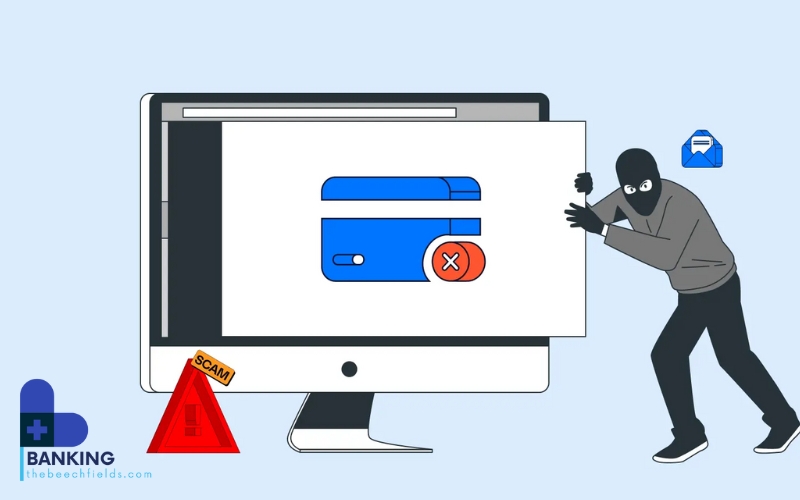In the modern financial world, bank account security is an extremely important factor that every individual and organization needs to pay attention to. With the rapid development of information technology, threats from hackers and cyber attacks are becoming more and more sophisticated, threatening the safety of bank accounts and financial transactions. Therefore, the security of your bank account is not only the responsibility of the bank but also the responsibility of the user of banking services. This article will help you better understand the methods of bank account security and how to protect your account.
1. THE IMPORTANT ROLE OF BANK ACCOUNT SECURITY
Bank account security not only ensures that your money and personal information will not be stolen, but also helps you avoid unnecessary financial losses. Banks provide a variety of financial services, from savings deposits, bill payments, loans, to online payment services. Protecting your bank account is extremely important to prevent fraud, scams, or unauthorized access to your account.
Attacks on the banking system can occur in many different forms, from stealing credit card information to complex cyber attacks on the bank’s security system. Therefore, understanding and applying appropriate security measures is essential to protect your account from these risks.

2. BANK ACCOUNT SECURITY METHODS
Currently, banks have been implementing many security methods to ensure the safety of customers’ accounts. Here are some common methods you should master:
Use strong passwords
Passwords are the first and most important factor in protecting your bank account. A strong password includes a combination of uppercase, lowercase, numbers and special characters. You should not use passwords that are easy to guess, such as your date of birth, name or phone number. In addition, change your password periodically and do not reuse a previously used password.
Many banks now require users to change their passwords when logging in for the first time or after a long period of inactivity. This helps reduce the risk of your account being hacked or compromised.
Two-factor authentication (2FA)
Two-factor authentication (2FA) is one of the most popular and effective security methods today. This is an additional layer of security on top of your password, helping to prevent unauthorized access to your account. When you log in to your bank account, in addition to your password, the bank will ask you to enter an authentication code that you receive via SMS, email, or an authentication app like Google Authenticator.
This method helps increase security and protect your account from hacker attacks, even if they get your password.
Switch to EMV chip cards
EMV chip cards (Europay, MasterCard, and Visa) are a type of credit or debit card that integrates higher security technology than traditional magnetic stripe cards. Chip cards have the ability to generate a unique transaction code for each transaction, helping to prevent card information from being copied when making payments. Banks encourage customers to use EMV chip cards to protect their financial information from being stolen during payment transactions.
EMV chip cards help increase security when using cards at transaction points, minimizing the risk of fraud through card copying.
OTP (One-Time Password) Code
OTP code is a security code that is generated uniquely for each transaction and has a short validity period. Usually, the OTP code will be sent via SMS or email to your registered phone number or email address. You will need to enter the OTP code to confirm the transaction when making money transfers or online payments.
The OTP code helps protect your financial transactions from unauthorized access, as this code is only valid for a short period of time and cannot be reused.
3. MEASURES TO PROTECT YOUR BANK ACCOUNT
In addition to using the security methods provided by the bank, you also need to proactively take measures to protect your bank account from threats. Here are some steps you should take:
Don’t share your account information
Never share your bank account information, including your account number, password, PIN, or OTP codes, with anyone, whether they are family or friends. Your bank will never ask you for your account information over the phone or by email. If you receive such a request, it is most likely a phishing attack.
Beware of phishing emails and messages
Phishing scams are becoming increasingly common. Attackers will send emails impersonating banks asking you to provide your account information or password. Be cautious when receiving messages or emails asking for your account information. Double-check the sender’s email address and never click on links in emails or messages that you are not sure are legitimate.
Update your security software regularly
Make sure your anti-virus software and security apps on your phone and computer are up to date. Security software will help detect and block malware, protecting your personal information and bank accounts from cyber threats.
Use secure Wi-Fi networks
Avoid banking transactions over public Wi-Fi networks, as they are not secure. If you must use public Wi-Fi, use a virtual private network (VPN) to encrypt your connection, helping to protect your personal data and bank accounts from being stolen.
4. RISKS OF WEAK SECURITY
If you do not take proper security measures, your bank account may be at risk of the following:
Losing money due to fraud: Hackers can steal your account information to illegally transfer money.
Personal Information Leakage: Attacks can expose personal information such as your ID number, phone number, and address, causing other security issues.
Losing Control of Accounts: If an attacker gets hold of your password and OTP, they can take control of your bank account and make unauthorized transactions.
CONCLUSION
Bank account security is an essential part of protecting your personal finances. Take advantage of the strong security measures your bank provides and be proactive in preventing risks related to your account. By following the right security practices and being careful with your transactions, you will help protect your bank account from outside threats.
